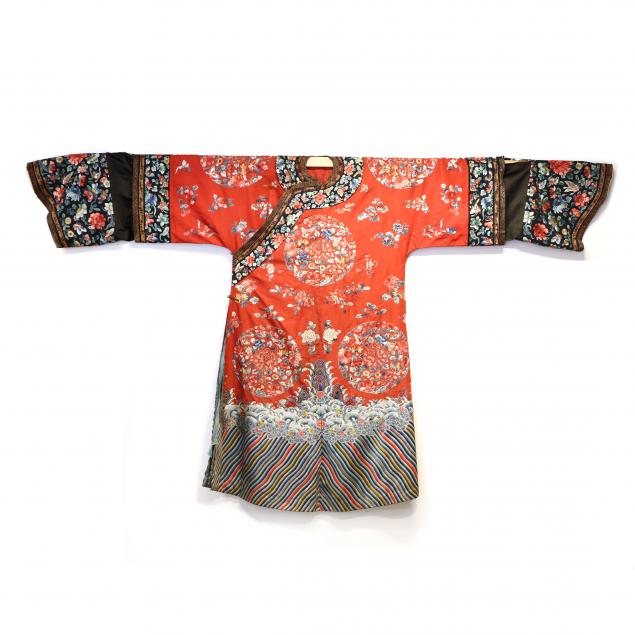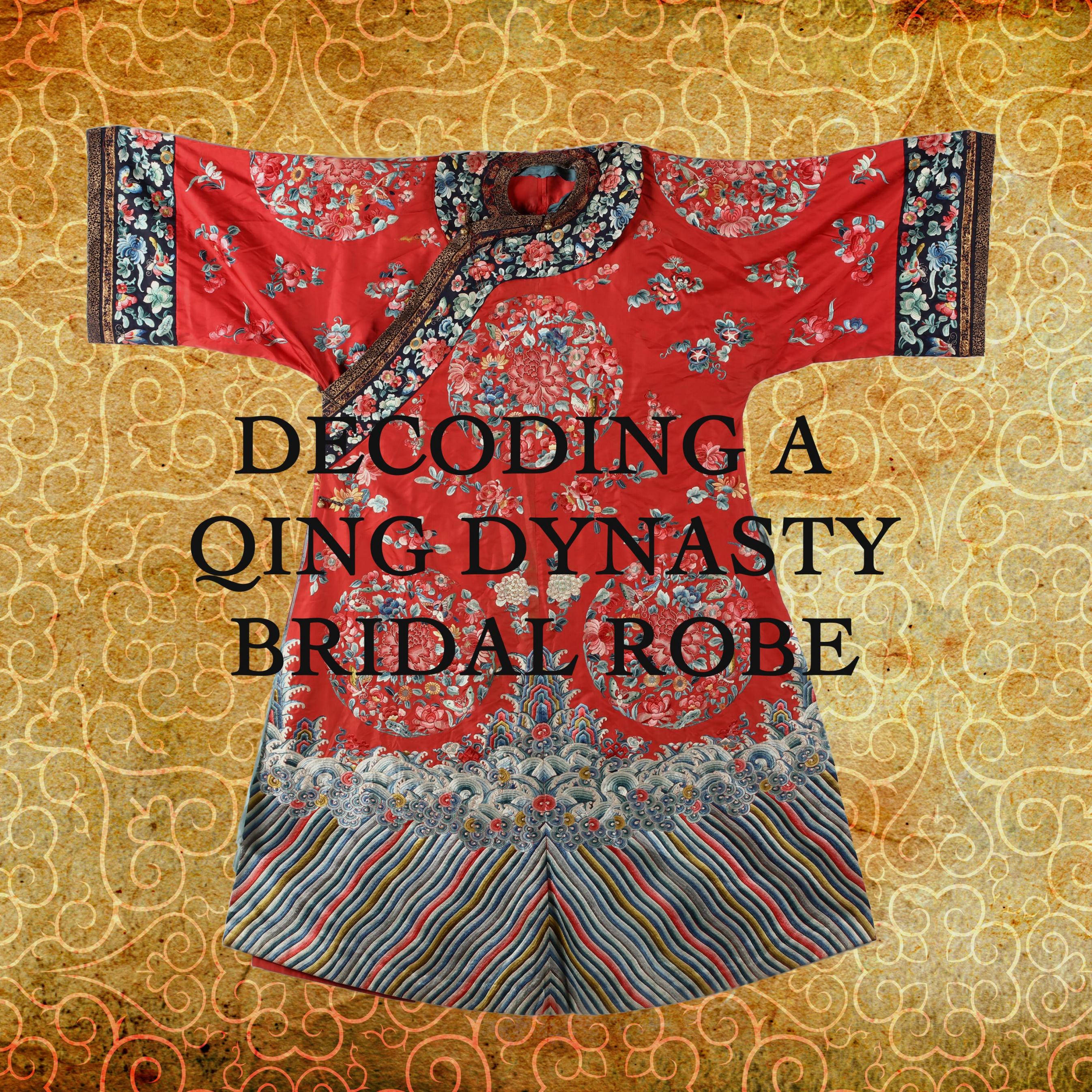
What we talk about when we talk about weddings can tell us so much about a culture. The dominance of the patriarchy, the role of economics in marriage matches, our responsibility to our in-laws, and their responsibility to us: all this and more is wrapped up in weddings. But one theme seems to transcend cultural specificity: weddings are one of life's great expressions of optimism.
In our Important Summer Auction on June 13th, we are offering a very fine bridal robe from the Qing dynasty. The robe was passed down by descent through the family of Herbert G. Squiers, who was the secretary to the American Legation in Peking (Beijing) in 1898. True to the Qing style of highly decorative objects, the robe is heavily embroidered with symbols that express all the hope for the future that is wrapped up in the beginning of two people's lives as a married couple. Below, we parse what these symbols are telling us.
In our Important Summer Auction on June 13th, we are offering a very fine bridal robe from the Qing dynasty. The robe was passed down by descent through the family of Herbert G. Squiers, who was the secretary to the American Legation in Peking (Beijing) in 1898. True to the Qing style of highly decorative objects, the robe is heavily embroidered with symbols that express all the hope for the future that is wrapped up in the beginning of two people's lives as a married couple. Below, we parse what these symbols are telling us.
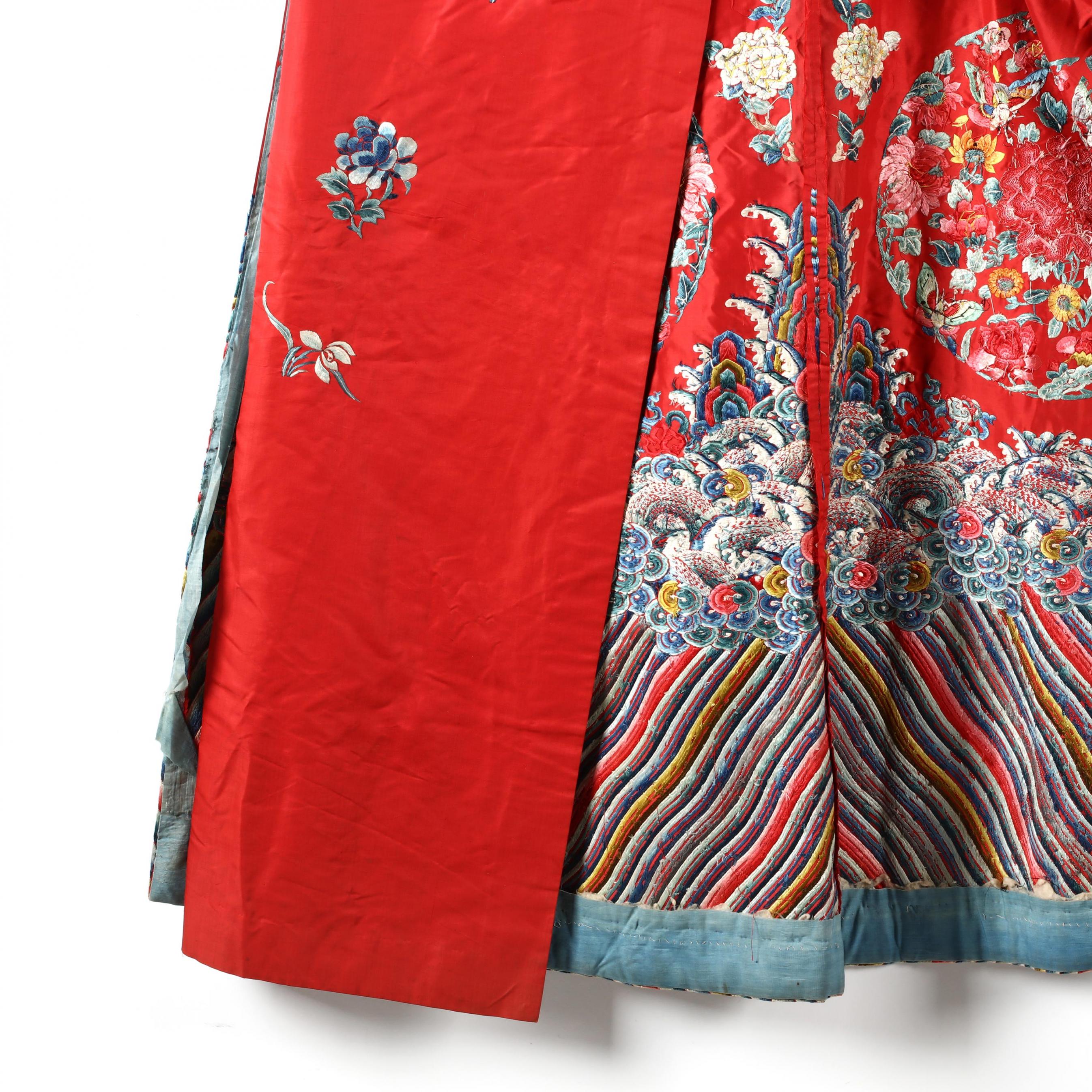
The Color Red
Red is, of course, the color of luck in China. But it wasn't alway so. Red began to appear on bridal clothes towards the end of the 19th century, showing the Han influence on the Qing dynasty. The color connotes many different positive things, including delight, honor, fertility, success and love.
Red is, of course, the color of luck in China. But it wasn't alway so. Red began to appear on bridal clothes towards the end of the 19th century, showing the Han influence on the Qing dynasty. The color connotes many different positive things, including delight, honor, fertility, success and love.
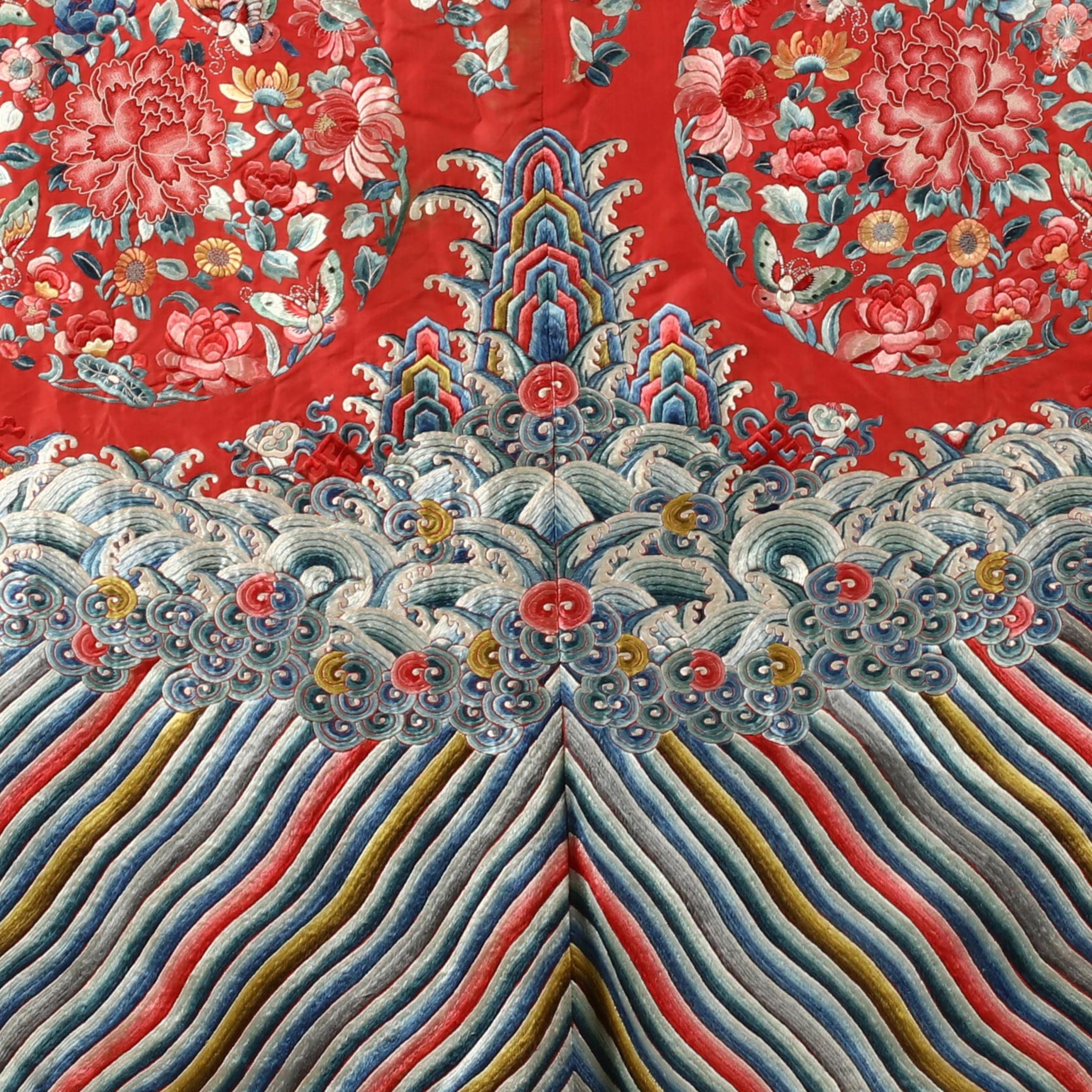
The Lishui Wave Border
The bottom of the robe is grounded by an area of diagonal stripes, topped with roiling waves and a geometric mountain design. Common to Manchu ceremonial robes, this is known as the "lishui" wave. The mountains symbolize the four cosmic points of the universe, and the waves conceal many other symbols of good fortune.
The bottom of the robe is grounded by an area of diagonal stripes, topped with roiling waves and a geometric mountain design. Common to Manchu ceremonial robes, this is known as the "lishui" wave. The mountains symbolize the four cosmic points of the universe, and the waves conceal many other symbols of good fortune.
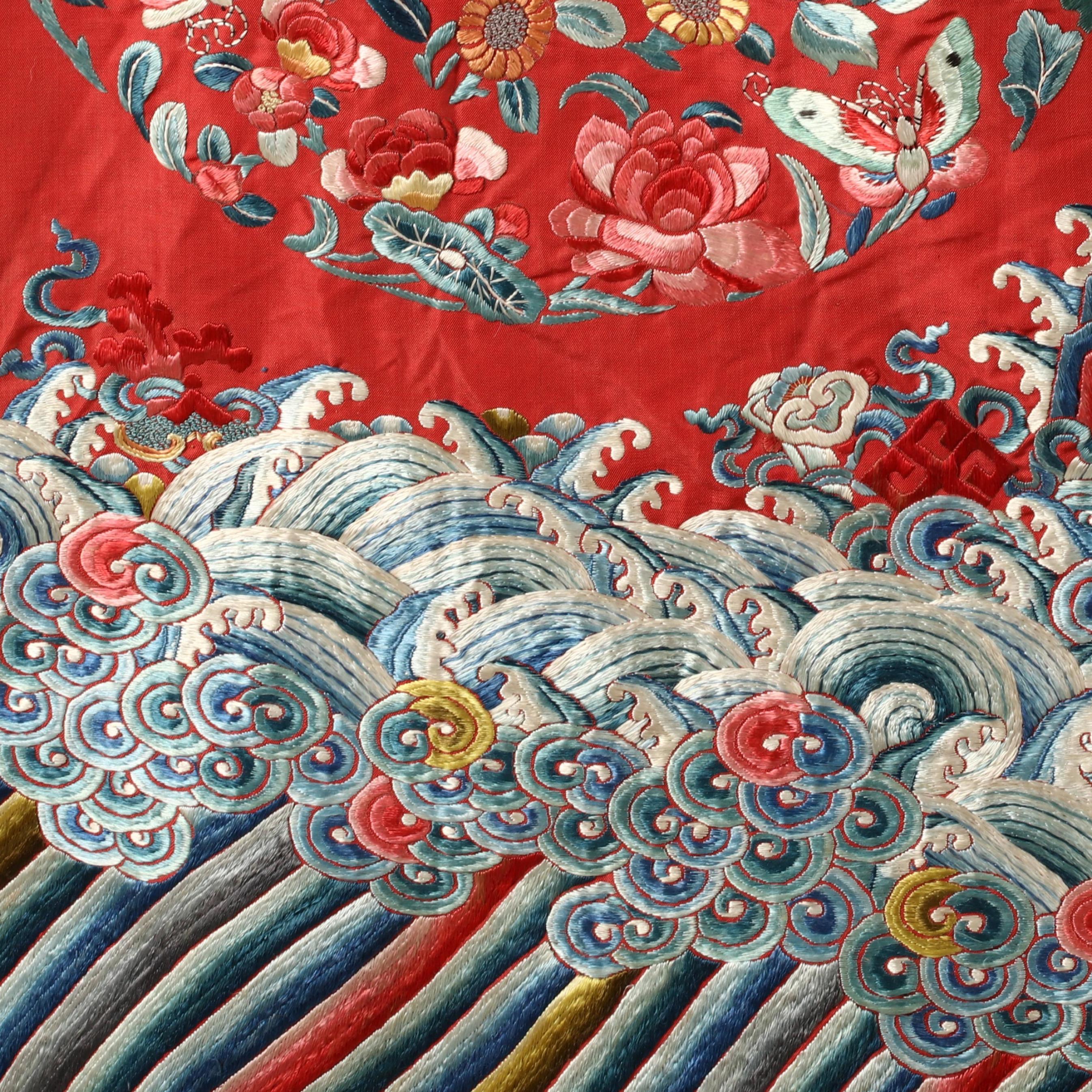
Symbols of the Eight Immortals
Rising from the waves at the robe's border are the small talisman of the Eight Immortals, characters from Taoist mythology that are said to bestow life and protect against evil. The vessels in the embroidered water fittingly contain their powers, since they are said to live on five islands in the Bohai Sea.
Rising from the waves at the robe's border are the small talisman of the Eight Immortals, characters from Taoist mythology that are said to bestow life and protect against evil. The vessels in the embroidered water fittingly contain their powers, since they are said to live on five islands in the Bohai Sea.
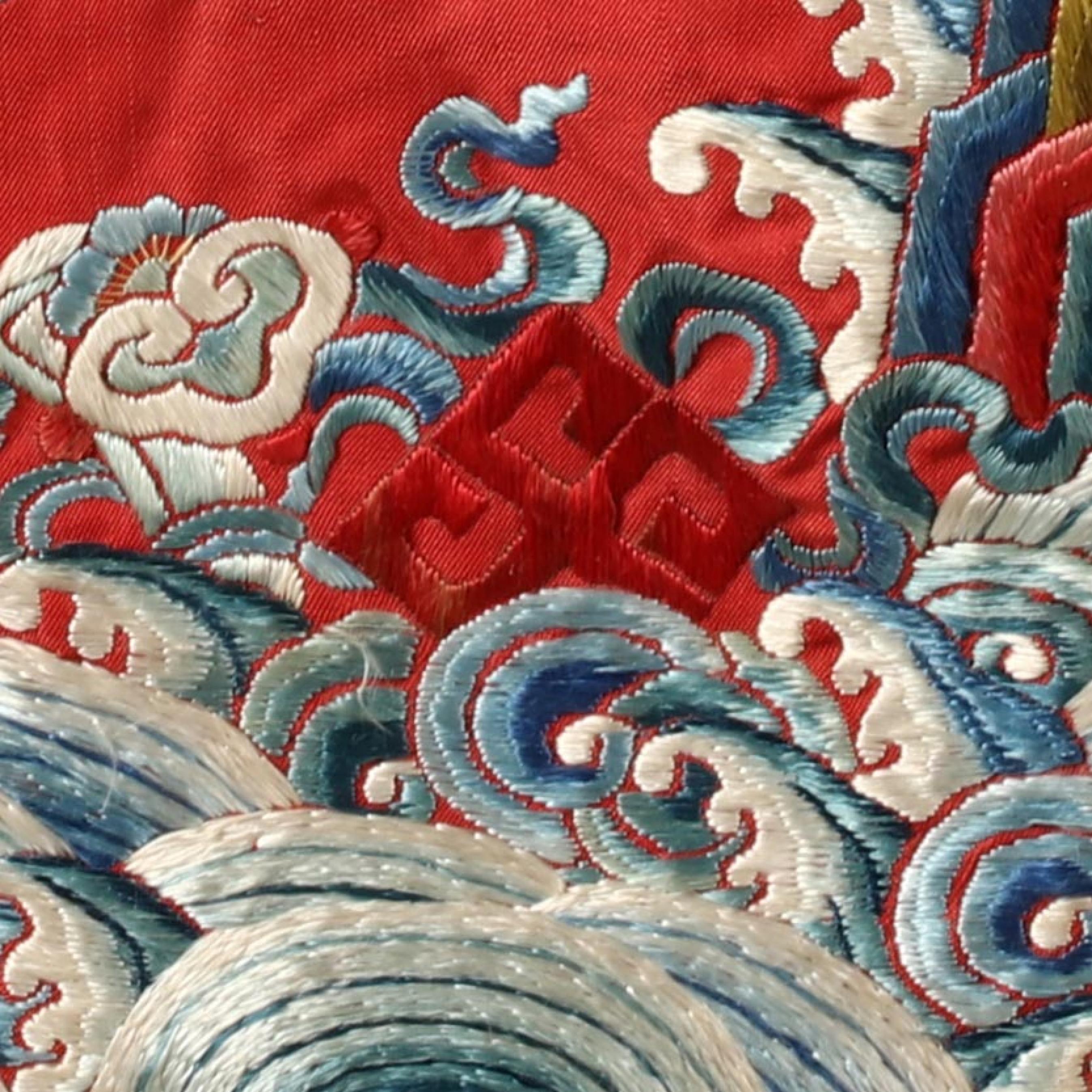
The Wan
The clockwise version of this symbol in Buddhism pre-dates the Nazi counter-clockwise version by many centuries. It's name, "swastika," is derived from the Sanskrit for "good fortune" or "well-being." It is often found on sculptures of the Buddha, usually in gold, in both clockwise and counter-clockwise iterations.
The clockwise version of this symbol in Buddhism pre-dates the Nazi counter-clockwise version by many centuries. It's name, "swastika," is derived from the Sanskrit for "good fortune" or "well-being." It is often found on sculptures of the Buddha, usually in gold, in both clockwise and counter-clockwise iterations.
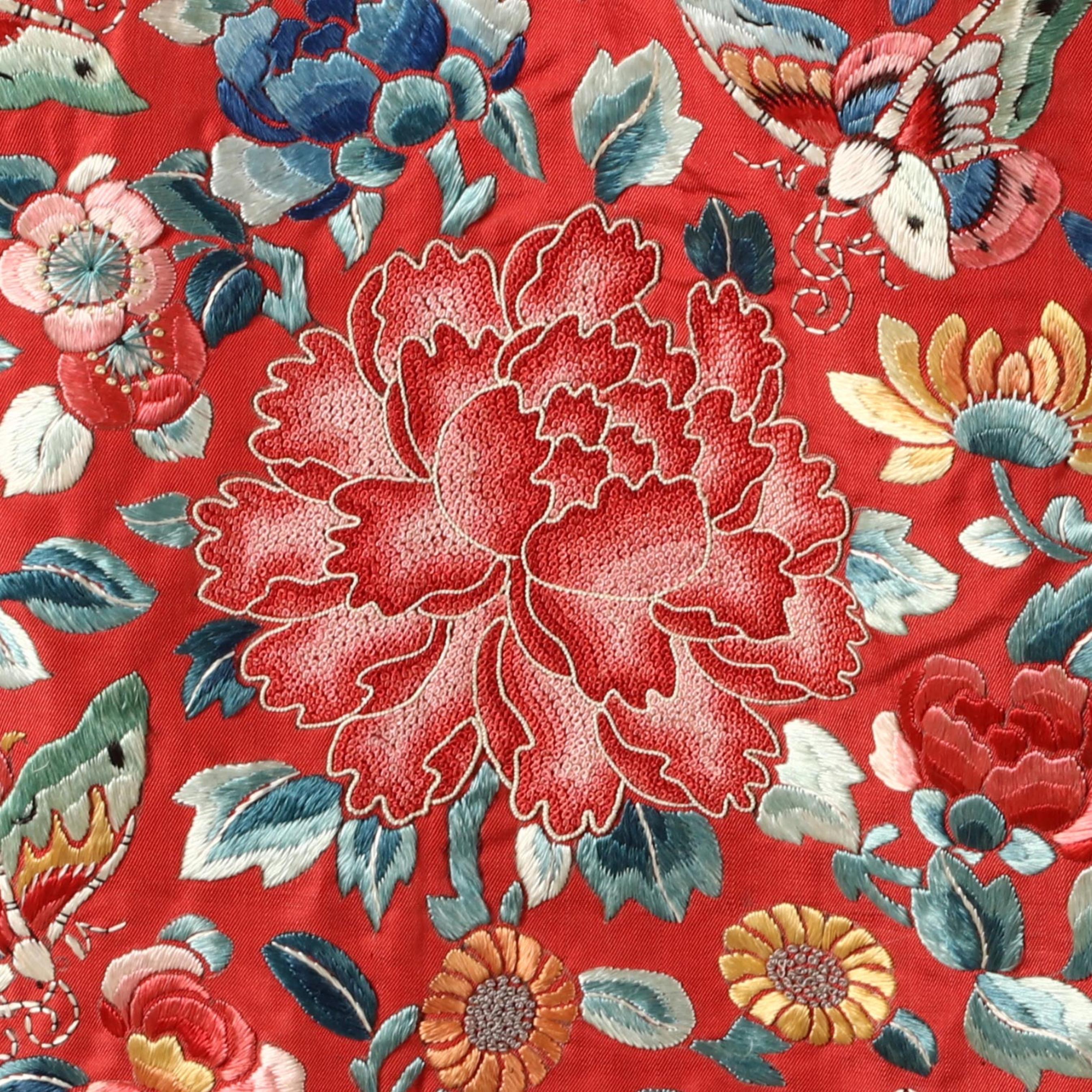
Peonies
In Chinese symbology, peonies are known as the King of Flowers, which is interesting since they are also a symbol of feminine beauty. Fittingly for a wedding, it also represents love and affection. The large peonies at the center of this robe's rondels were embroidered with the "forbidden stitch" or peking knot, which is supposedly so exacting that it causes the embroidered to go blind. The difficult stitch was reserved for the most special textiles.
In Chinese symbology, peonies are known as the King of Flowers, which is interesting since they are also a symbol of feminine beauty. Fittingly for a wedding, it also represents love and affection. The large peonies at the center of this robe's rondels were embroidered with the "forbidden stitch" or peking knot, which is supposedly so exacting that it causes the embroidered to go blind. The difficult stitch was reserved for the most special textiles.
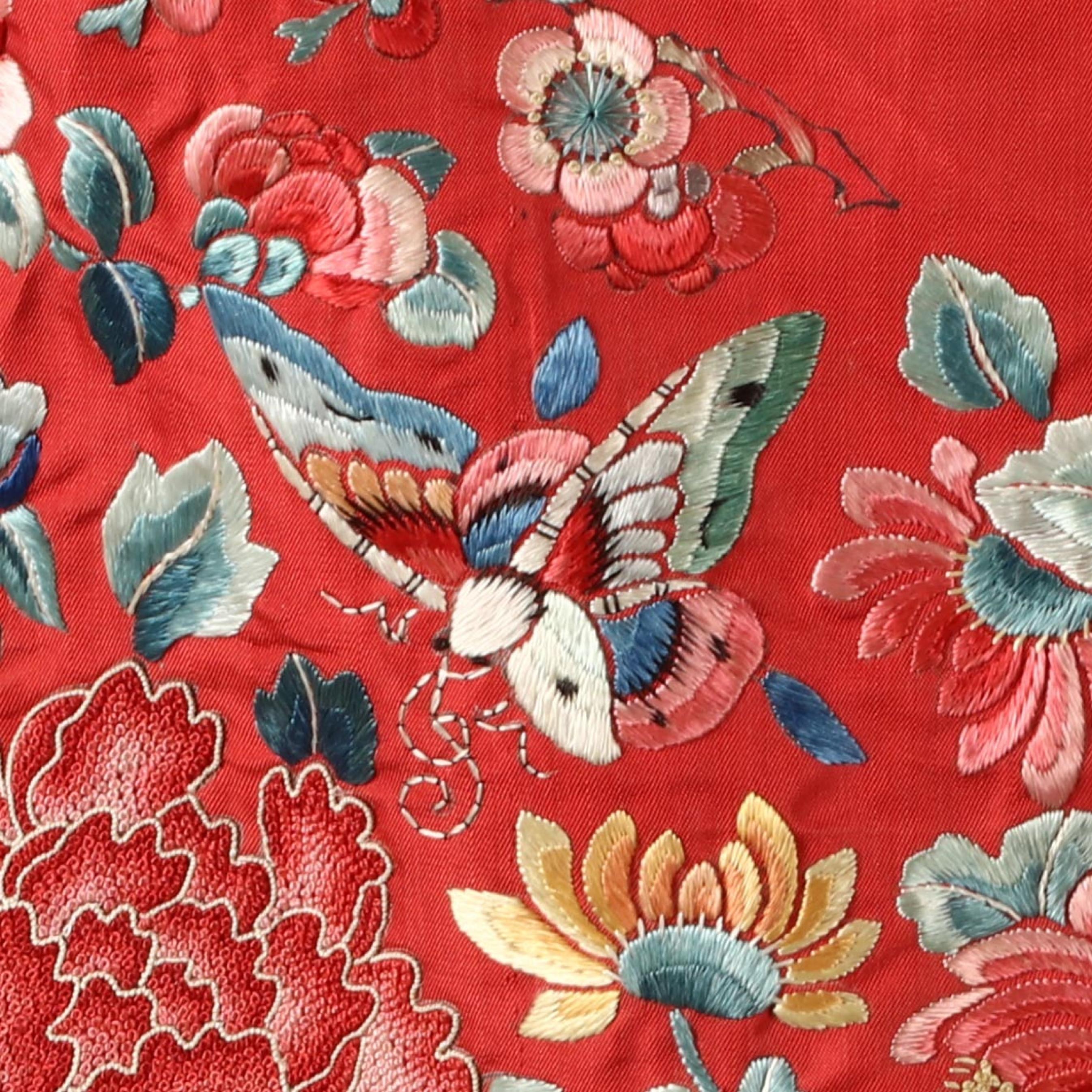
Butterflies
The main "animal" or insect symbol on the robe is the butterfly, which can be found flitting around the flowers in the eight roundels. Butterflies were a symbol of love, and young love in particular. They also connote romanticism and marital joy. A favorite theme of the last Qing Empress, Cixi, was the "Hundred Blessings" symbolized by 100 butterflies.
The main "animal" or insect symbol on the robe is the butterfly, which can be found flitting around the flowers in the eight roundels. Butterflies were a symbol of love, and young love in particular. They also connote romanticism and marital joy. A favorite theme of the last Qing Empress, Cixi, was the "Hundred Blessings" symbolized by 100 butterflies.


